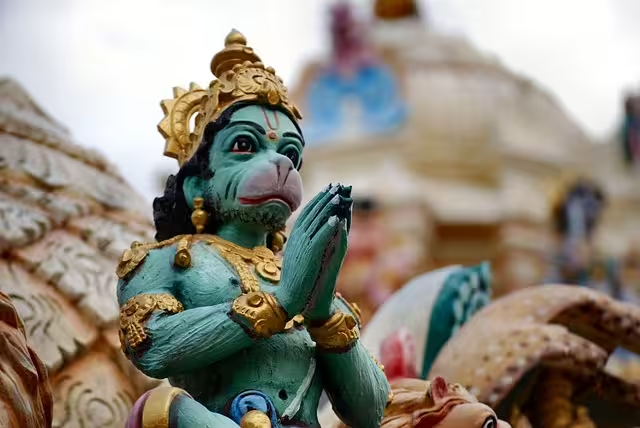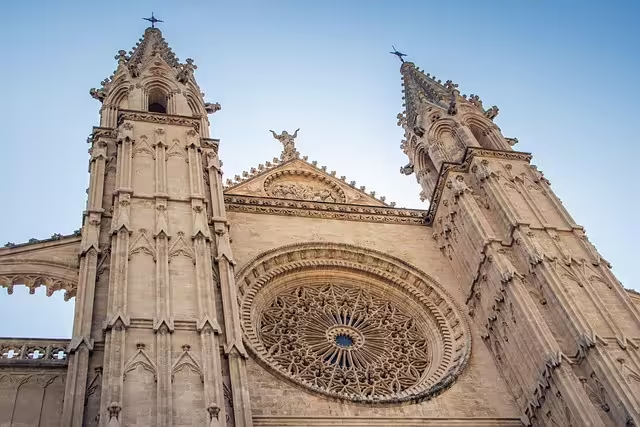Imagine for a moment a person kneeling at the edge of the Ganges River in India, the water a sacred, cleansing force. Picture a Zen Buddhist monk in Japan, finding enlightenment in the quiet observation of a garden. Think of an ancient Celtic druid in Europe, marking the passage of the sun at a circle of standing stones. These are not just cultural snapshots; they are powerful examples of the deep, ancient, and often complicated bond between human spirituality and the environment.
For most of human history, religion has been the primary language we used to understand our place within the grand tapestry of nature. It has served as the lens through which we have viewed, revered, managed, and at times, sadly, sought to control the world around us. This relationship is not a simple story of good or bad. Instead, it is a complex tale of both incredible respect for nature and, in some interpretations, a justification for its misuse.
In this exploration, we will journey from the earliest human beliefs about an enchanted, living world to the great religions of the East and West, and finally to the modern era, where many are looking back to these ancient spiritual traditions for answers to our current environmental problems. Understanding how religion influenced human connections with nature is more than an academic exercise; it’s a vital step in understanding ourselves and finding a more balanced way to live on this planet.
Table of Contents
The Dawn of Belief: Animism and the Enchanted World
Long before the construction of temples, mosques, or cathedrals, the earliest form of human spirituality was animism. The word itself comes from the Latin anima, meaning “breath, spirit, life.” At its core, animism is the belief that all things in nature, not just humans and animals, possess a spirit or a life force. To an animist, a river is not just a body of flowing water; it is a living entity with a spirit. A mountain is not just a pile of rock; it is an ancient, powerful being. A tree, a rock, the wind, the rain, all were seen as alive and aware.
In this worldview, there was no sharp line dividing the human world from the world of nature. Humans were simply one part of a much larger, interconnected family of beings. The natural world was not a resource to be used, but a community to be lived with. This belief had a profound effect on how people interacted with their environment. If you believe the forest has a spirit that is watching you, you are less likely to cut down trees carelessly. If you believe the river can feel pain, you will not pollute its waters. This relationship was built on a foundation of respect and what we might call reciprocity, a kind of give and take.
You would take from nature only what you needed, and you would often give something back in the form of a prayer, an offering, or a ceremony of thanks. This ensured that the delicate balance of the local ecosystem was maintained.
This deep, place based knowledge, passed down through generations, is what many scholars today call Traditional Ecological Knowledge (TEK). It is a system of understanding nature that is woven together from spiritual beliefs, practical experience, and careful observation over centuries. TEK guided sustainable practices for hunting, fishing, farming, and gathering. It taught people which plants could be used for medicine, when to plant crops based on the stars, and how to read the signs of the changing seasons. It was a holistic science, where the spiritual and the practical were one and the same.
For these early societies, their connection to nature was not a hobby or a weekend activity; it was the very center of their existence. The health of their community was directly tied to the health of the nature around them. This animistic view saw the entire world as an enchanted, living place, a perspective that shaped a deeply respectful and sustainable human connection with nature for tens of thousands of years.
The Dharmic Path: Nature as a Manifestation of the Divine

As societies grew and civilizations developed in the East, new religious and philosophical systems emerged, known as the Dharmic traditions. These include Hinduism, Buddhism, and Jainism. While distinct, they share a common thread: a view of nature not merely as a collection of spirits, but as an integral part of a larger cosmic order and a direct expression of the divine.
In Hinduism, one of the world’s oldest living religions, the connection to nature is profound and multifaceted. The concept of Prakriti is central. Prakriti is often translated as “nature,” but it means much more. It is the primordial, creative energy of the universe, often seen as a divine feminine force from which all material things emerge.
The entire physical world, from the smallest atom to the largest galaxy, is a part of Prakriti. This means that nature is not separate from God, but is a manifestation of God. Consequently, to harm nature is to disrespect the divine itself. This reverence is seen everywhere in Hindu culture. The Ganges River is not just water; it is the goddess Ganga, a purifying life force. The mighty Himalayas are not just mountains; they are the abode of the gods.
Certain trees, like the Banyan and Peepal, are considered sacred. Animals also hold a special place. The cow is revered as a symbol of life and sustenance, and many gods are associated with or take the form of animals, such as Ganesha with his elephant head or Hanuman, the monkey god. This worldview fosters a deep, intrinsic respect for the various forms of life found in nature.
Buddhism, which arose from the teachings of Siddhartha Gautama, offers a different yet equally powerful perspective on nature. A core teaching in Buddhism is Dependent Origination, the idea that everything is interconnected. Nothing exists on its own; everything is connected to everything else in a vast, intricate web of cause and effect. A flower cannot exist without the soil, the water, the sun, and the air. A human cannot exist without the food, water, and air that nature provides. This teaching dismantles the illusion that we are separate from our environment. We are not just in nature; we are nature. This understanding naturally leads to a sense of compassion for all living things.
The story of the Buddha’s enlightenment is itself deeply tied to nature. He achieved his awakening while meditating under a Bodhi tree. The natural setting was not just a backdrop; it was a quiet, supportive teacher. Many Buddhist practices, especially in Zen, involve mindful observation of nature, such as in the careful design of gardens or the simple act of walking meditation in a forest. This quiet contemplation of nature helps the practitioner see the truth of interconnectedness and find inner peace.
Other Dharmic faiths extend this reverence even further. In Jainism, the principle of Ahimsa, or non violence, is the highest law. This principle is applied to all living beings, including animals, insects, and even microscopic organisms. Jains often take great care to avoid harming any form of life.
Similarly, Taoism, a philosophical tradition from China, emphasizes living in harmony with the Tao, which can be understood as the natural, spontaneous flow of the universe. For Taoists, the best way to live is to be like water, flowing effortlessly with the currents of nature rather than trying to struggle against them.22 Together, these Eastern traditions offer a vision of the world where the line between the self and nature dissolves, replaced by a profound sense of unity and shared existence.
The Abrahamic Covenant: Stewardship, Dominion, and Creation

The Abrahamic religions, Judaism, Christianity, and Islam, which all trace their origins back to the patriarch Abraham, share a common creation story that has profoundly shaped the Western world’s relationship with nature. This relationship, however, is marked by a central tension, a debate that continues to this day. The conflict revolves around two key concepts found in their sacred texts: stewardship and dominion.
In Judaism, the connection to nature begins in the very first chapter of the Torah, with the story of creation in the Garden of Eden. The garden represents a perfect state of harmony between God, humanity, and nature. Early Jewish law contains many rules designed to protect the environment. One important concept is Bal Tashchit, a law that forbids needless destruction. You cannot cut down a fruit tree even during a time of war, because it provides sustenance. This idea extends to a general prohibition against wastefulness. Another key concept is Tikkun Olam, which means “repairing the world.”
This has come to be understood as a human responsibility to care for the planet and leave it in a better state for future generations. The Jewish calendar is also closely tied to the cycles of nature in the land of Israel, with festivals celebrating the harvest and the changing seasons. The holiday of Tu BiShvat, for instance, is the “New Year for Trees,” a day dedicated to planting trees and celebrating the natural world. This tradition shows a deep appreciation for the land and its fruits, seeing nature as a divine gift that must be cared for.
Christianity inherited this tradition but also introduced a new layer of complexity. The most debated verse concerning the environment comes from the Book of Genesis, where God tells humans to “have dominion over the fish of the sea, and over the fowl of theair, and over every living thing that moveth upon the earth.” For centuries, this idea of “dominion” was interpreted by many as a divine permission to rule over and use nature however humanity saw fit. The historian Lynn White Jr., in a famous 1967 essay, argued that this interpretation provided the philosophical and moral justification for the exploitation of nature that led to our modern environmental crisis.
However, this is not the only interpretation. Many other Christians have argued that “dominion” should be understood in the sense of stewardship. A good king, or steward, does not destroy his kingdom; he cares for it, nurtures it, and ensures its health and prosperity. This is the model of Creation Care, a growing movement within Christianity that emphasizes the human duty to protect God’s creation.
Figures like St. Francis of Assisi, who preached to birds and referred to the sun and moon as his brother and sister, represent this deep love for nature. More recently, Pope Francis wrote a powerful letter called Laudato Si’, in which he called on all people to recognize the damage being done to our “common home” and to work together to protect nature.
In Islam, the Qur’an repeatedly calls believers to reflect on the natural world as a collection of signs, or ayat, that point to the greatness and wisdom of Allah. The sun, the moon, the rain, the growth of plants, all are miracles that reveal the divine creator. To study nature is to learn more about God. The human role in this creation is that of a Khalifa, which translates to “steward” or “vicegerent.” Humans are God’s representatives on Earth, entrusted with the sacred duty of maintaining and caring for it. They do not own the planet; they are its temporary guardians. The Qur’an also speaks of Mizan, or balance.
God created the universe in perfect balance, and it is the human responsibility not to upset this delicate equilibrium. Islamic traditions contain many teachings about the ethical treatment of animals, the conservation of water, and the sustainable use of land. Like Judaism and Christianity, Islam contains a powerful environmental ethic, seeing nature not as a mere commodity, but as a sacred trust from God. This a very powerful concept for the protection of nature.
The Modern Schism and a Spiritual Renaissance

For thousands of years, the world was largely seen through a spiritual or religious lens. But starting around 500 years ago, a major shift in thinking began in Europe, often called the Scientific Revolution. Thinkers like Isaac Newton began to describe the universe as a giant machine, operating according to predictable, physical laws. This new, mechanistic worldview was incredibly powerful and led to amazing technological advancements. However, it also had a profound side effect: it began to “disenchant” the world. Nature was no longer seen as a living, spiritual entity, but as a collection of resources, a machine that could be taken apart, understood, and controlled for human benefit.
This shift in thinking, combined with the Industrial Revolution, created a much wider gap between humanity and nature. Forests were cleared for lumber, mountains were mined for coal and ore, and rivers were polluted with industrial waste. The old ideas of respect, reciprocity, and stewardship were often pushed aside in the name of progress and profit. The spiritual connection that had guided human behavior for millennia was weakened, replaced by a relationship based on utility and exploitation. Many felt that science had made religion obsolete, and with it, the idea that nature had any sacred value.
However, in the last half century, as the negative consequences of this separation have become terrifyingly clear through climate change, mass extinction, and widespread pollution, a fascinating counter movement has begun. This is the rise of eco theology and spiritual ecology. People within many different religious traditions are looking back at their own sacred texts and histories to rediscover the environmental wisdom they contain. Christian scholars are re examining the meaning of stewardship. Jewish thinkers are expanding the concept of Tikkun Olam to include global ecological repair. Muslim leaders are emphasizing the role of the Khalifa in a modern context.
This is more than just an academic exercise. It is a genuine spiritual renaissance. Faith communities around the world are becoming more active in environmental causes. They are installing solar panels on their places of worship, creating community gardens, advocating for climate justice, and teaching their members about the sacred duty to care for the Earth.
Thinkers like the Catholic priest Thomas Berry have been incredibly influential. He argued that we are in a time of deep crisis and that what we need is a “New Story,” a new way of understanding the universe and our place in it that combines the insights of modern science with the spiritual wisdom of the world’s ancient traditions. This new story would once again see the universe and nature not as a dead machine, but as a sacred, living community of which we are a part. This spiritual reawakening is a sign of hope, suggesting that the old connection to nature is not lost, but is being reborn in a new and powerful way.
Conclusion: Re-Weaving the Sacred Connection
The story of how religion influenced human connections with nature is a vast and winding one, filled with both light and shadow. We have seen how early animistic beliefs forged a deep sense of kinship with a living world, leading to a sustainable and respectful relationship with nature. We have explored the Dharmic traditions of the East, which see the natural world as a direct manifestation of the divine, a web of interconnected life in which we are all participants. We have also examined the complex legacy of the Abrahamic faiths, which hold within them the conflicting ideas of dominion and stewardship, a tension that has led to both the exploitation and the dedicated protection of nature.
The legacy is therefore a dual one. On one hand, certain interpretations of religious texts have undeniably been used to justify the domination and misuse of the natural world. On the other hand, buried within these same traditions is a profound wellspring of ecological wisdom, a deep understanding that the Earth is a sacred gift, a living community that must be treated with reverence, care, and respect.
Today, as we face unprecedented environmental challenges, this ancient wisdom is more relevant than ever. Re weaving this sacred connection to nature may be one of the most important tasks of the 21st century. It requires us to look beyond a purely scientific or economic view of the world and to rediscover the sense of awe, wonder, and moral responsibility that our spiritual traditions have offered for millennia. In doing so, we may find not only a path to a more sustainable future for our planet, but also a deeper and more meaningful connection to the beautiful world of nature that is our only home.
